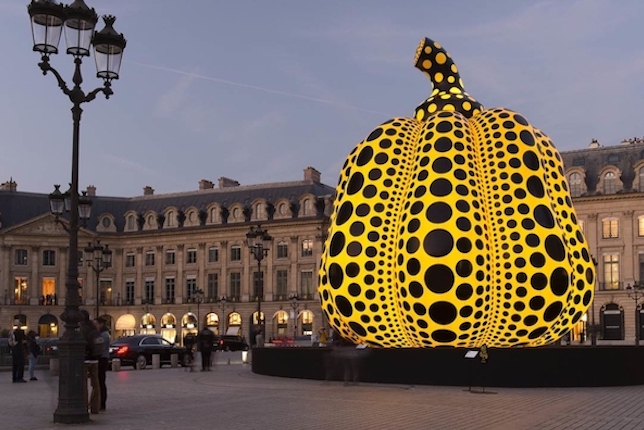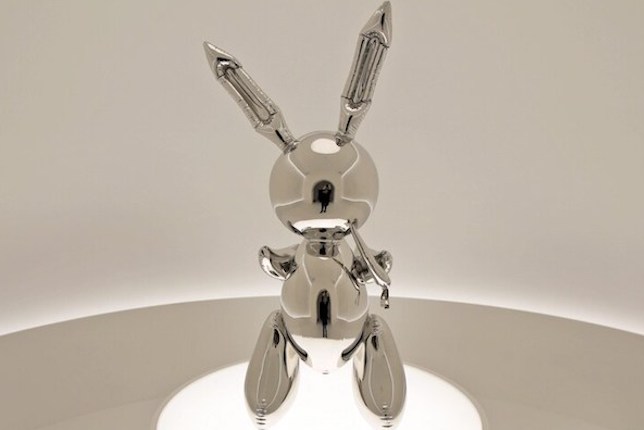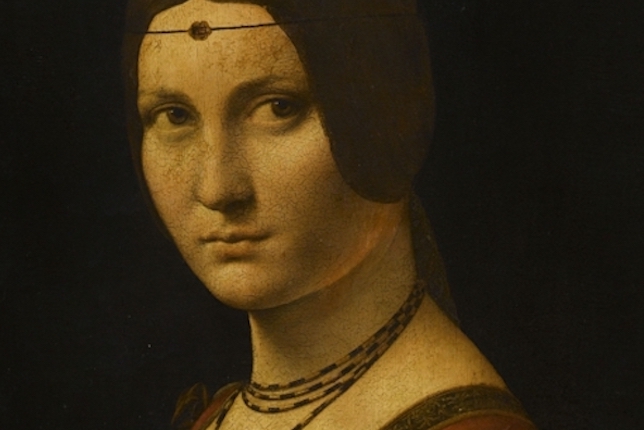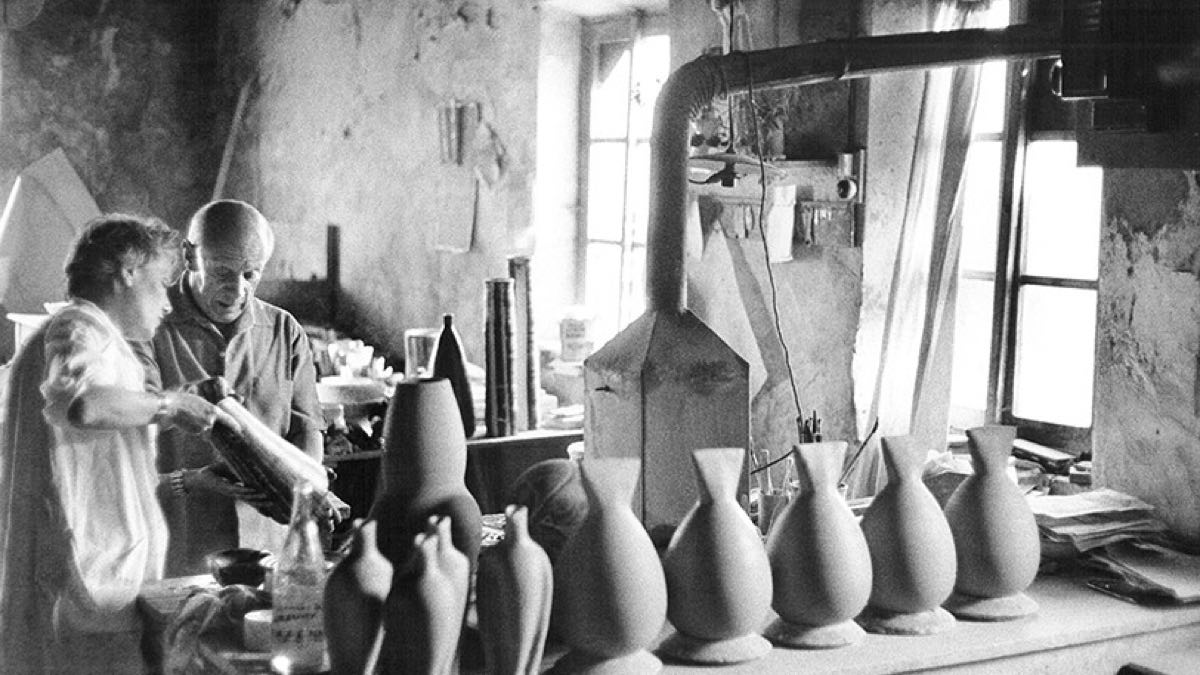
10 things that shaped the art market in 2019
Engaged, unpredictable, successful, competitive, international, encouraging, controversial, or beautiful: how would you summarise this year? Here are 10 things that shaped the contemporary art market in 2019.
#1 The FIAC broke its attendance record

In 2017, the International Contemporary Art Fair, or FIAC, recorded no less than 73,910 visitors in 5 days, compared with 72,500 in 2018. However, it was its 46th edition that would break this record, with a total of 74,580 attendees. Despite rumours of a flagging French art market, Jennifer Flay, president of the FIAC, stated that the Paris market is ‘increasingly attractive’ in a market dominated by New York, London and Hong Kong. For the FIAC 2019, 199 galleries from 28 countries exhibited at the Grand Palais, including an Iranian gallery and one from Sub-Saharan Africa for the first time.
#2 The Louvre pyramid was transformed under the expert eye of street artist JR

For the Louvre Pyramid’s 30th anniversary last March, Jean-René, or JR, revealed a new (under)side to it in an incredible trompe l’oeil entitled Le secret de la grande Pyramide (the great Pyramid’s secret).
In 2016, the french street artist performed a brilliant disappearing act on the glass monument. This time, he chose to reveal its hidden secret; its foundations, buried for thousands of years. To do so, he designed an enormous photographic collage (his largest to date). The entire Napoleonic court was covered over, including the fountains and mini Pyramids. It was a mammoth task, to which 400 volunteers devoted themselves over 3 days, cutting, placing and gluing 2,000 strips of paper to create this monumental collaborative work.
#3 One of Banksy’s works sold for £9.9 million

Going, going, gone! On the 3rd October 2019, Banksy’s satirical Devolved Parliament painting was sold for the modest sum of £9.9 million. The identity of the new owner of this immense dystopian painting, measuring 2.5 by 4.2m, has not yet been disclosed. Organised by Sotheby’s (London) this sale is doubly controversial, firstly due to the author’s status as a street artist. That his work could be sold for millions is inconceivable for those who view street art as free and accessible to all – and complicated further when the artist himself wasn’t even the recipient of the money. Secondly, in the current climate of Brexit, the painting is incredibly politically engaged, as with many in the art market in 2019. Indeed, it depicts British MPs as chimpanzees! Not everyone appreciated this cynical metaphor.
#4 The debate around Jeff Koons’ Bouquet

2019 was also a year of debates in the contemporary art world. Amongst them, that of Jeff Koons‘ gigantic installation a few metres from the Grand Palais. On the 4th October 2019, Bouquet of Tulips by the artist and businessman Jeff Koons was unveiled with great pomp and circumstance.
Given to the city of Paris in memory of the victims of the Bataclan attacks, the colourful flowers standing at over 11m high have sparked controversy. First of all for their price; 3.5 million euros, not paid for by the city but by patrons. However, this is what irritated Parisians, because these ‘generous donations’ benefited from a 60% tax deduction. In order to show their dissatisfaction, personalities from the arts and culture such as Christian Boltanski and Frédéric Mitterand signed a letter entitled Non au “cadeau” de Jeff Koons (No to Jeff Koons’ ‘present’). Ultimately, the bouquet has remained in place, while opinions are still divided.
#5 David Zwirner’s mega-gallery arrived in Paris

On the 16th October, taking advantage of the artistic excitement surrounding the FIAC 2019, the New York mega-gallery David Zwirner opened in the heart of the Marais. With existing branches in London, Hong Kong and of course the Big Apple, it can now be found in Paris at 108 rue Vieille du Temple. Its iconic setting was previously home to the Yvon Lambert Gallery and to VHN Gallery from 2015 to mid-2019.
In the context of Brexit, David Zwirner’s move to Paris encouraged lots of his London contemporaries to do the same. Indeed, many are now looking for a base in the capital to bypass any high import taxes coming into force post-Brexit. Great news for the French art market!
#6 Market trends : female artists, African art and street art

One of the many attractions of the contemporary art market is that it constantly evolves. This year, some trends have emerged in the art world.
Up first, women’s art and gender equality. Previously dominated by men, the art market in 2019 is opening up to parity. This is illustrated by the success of several visual artists such as Jenny Saville, Julie Mehretu, Yayoi Kusama, Rachel Whiteread, Carole Feuerman, Sophie Calle, Charlotte Falcini and Satr. Secondly, African art. It is no coincidence that the fair Also Known As Africa (AKAA) was such a huge success this year: all eyes are on this emerging art. And last but by no means least, street art. For several years now, urban art has been appearing all over the walls of the world’s capitals and artists’ canvases. Some of the most famous names? Banksy, Shepard Fairey (Obey), M. Chat, JonOne, L’Atlas, JR and Miss Tic; all very popular amongst collectors.
#7 A new record for the most expensive work of art in the world

On Wednesday 15 May 2019, Jeff Koons’ Rabbit sculpture was sold at auction for $91 million; a record for a living artist. The auction was organised by Christie’s in New York. In 2013, the artist and businessman set the record for a sale by a living artist with Balloon Dog (Orange), at $58.4 million. However, last November he was dethroned by David Hockney’s painting Pool with Two Figures ($90.3 million). The plastic artist eventually recovered his title with the sale of Rabbit for precisely $91,075,000, making this work the most expensive in the world. This continued to fuel debates surrounding this controversial artist in the art market in 2019.
#8 The Louvre celebrates Leonardo da Vinci

Next, the Louvre pays homage to the creative genius of Italian painter and polymath Leonardo da Vinci in a long-awaited exhibition to mark the 500th anniversary of his death. This retrospective for the world’s most famous painter includes 5 paintings (Virgin of the Rocks, The Mona Lisa, Saint John the Baptist and The Virgin and Child with Saint Anne), 22 drawings (including the Vitruvian Man) and nearly 140 other works from some of Europe and America’s most prestigious institutions. However, it was far from easy receiving approval for these works of art, hundreds of centuries old and weakened by time, to travel. A testament to the brilliant work of curators Vincent Delieuvin and Louis Frank, 220,000 tickets were sold before the exhibition began on the 24th October.
#9 The environment at the heart of artistic inspiration

As well as politicians and institutions, artists are engaging with today’s environmental issues. For instance, Sotheby’s brought together ten internationally renowned contemporary artists, including Anish Kapoor, for its exhibition Tomorrow’s Tigers. The purpose of the event was to raise awareness about the alarming destruction of global biodiversity. A similar campaign took place outside the Tate Modern. Ice Watch, an installation created by artists Olafur Eliasson and Minik Rosing at the end of last year, featured 24 blocks of real ice. It’s aim? To raise awareness about climate change amongst the general public through direct contact with the problem (the melting of the ice caps). And finally, there are portraits of Greta Thunberg everywhere you look; painted, glued or sprayed across walls as signs of support. Now more than ever, artists are representing the voices of our society.
#10 Technology: Social media, Artificial Intelligence and AR-T

Finally, the globalisation of art and growing number of internet users have made social media platforms increasingly relevant as digital galleries, transforming the market in 2019. They influence collectors’ tastes, particularly amongst Millennials and Generation Z, for whom the use of social media is almost a given. And, according to a 2019 Hiscox study, 40% of art buyers under the age of 35 do so on the internet, compared with 36% in 2009.
Following the same technological trend, institutions such as the Barbican Centre (London) or the Centquatre (Paris) explore Artificial Intelligence through regularly organising exhibitions on the relationship between Humans and AI. What’s more, this year also saw the development of AR-T (art and Augmented Reality). Indeed, it’s now possible to visit museums from your desk, or see a work by Nick Cave atop a skyscraper while walking through the streets of New York.

About Artsper
Founded in 2013, Artsper is an online marketplace for contemporary art. Partnering with 1,800 professional art galleries around the world, it makes discovering and acquiring art accessible to all.
Learn more













